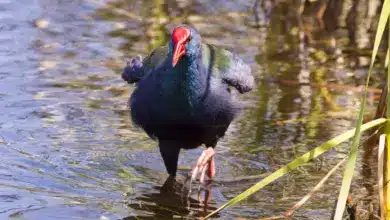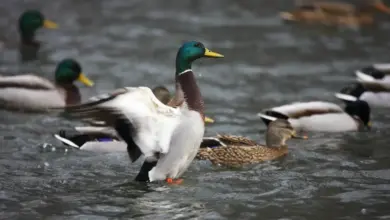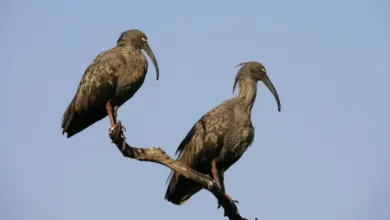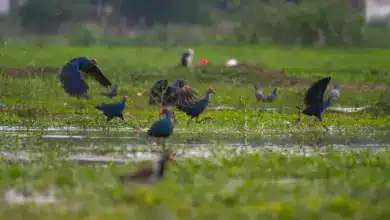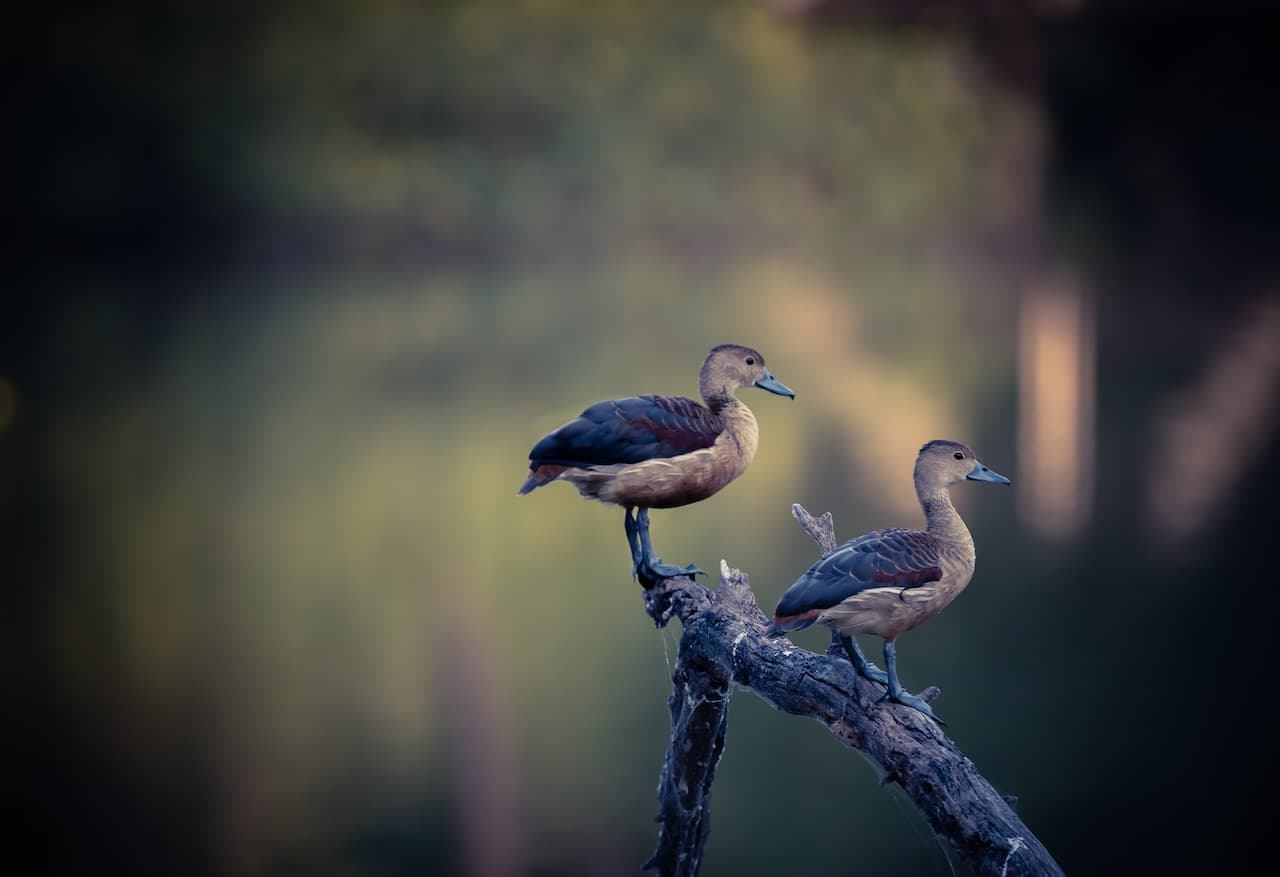Kelp Geese
The Kelp Geese are found in the Southern part of South America; in Patagonia, Tierra del Fuego, and the Falkland Islands.
They were named for the fact that they like to feed on kelp – migrating along the rocky coast of South America in order to find its favored food source.
There are estimated to be about 15,000 breeding pairs in existence.

Description
Males have a white plumage and black beaks.
Females are mostly dark brown, with grey lines on the chest. They have flesh-colored beaks.
Males and females have yellow feet.
Behavior
The average clutch consists of 2 – 7 eggs.
The eggs are usually well hidden in long grass.
The young hatch about one month after laying. Kelp geese generally have clutches of 2-7 eggs.
Diet / Feeding:
Kelp Geese, of course, primarly feed on kelp. When feeding in water, they submerge their heads and necks to reach aquatic plants, sometimes tipping forward like a dabbling duck. Flocks of these birds often feed on leftover cultivated grains in fields, especially during migration or in winter.
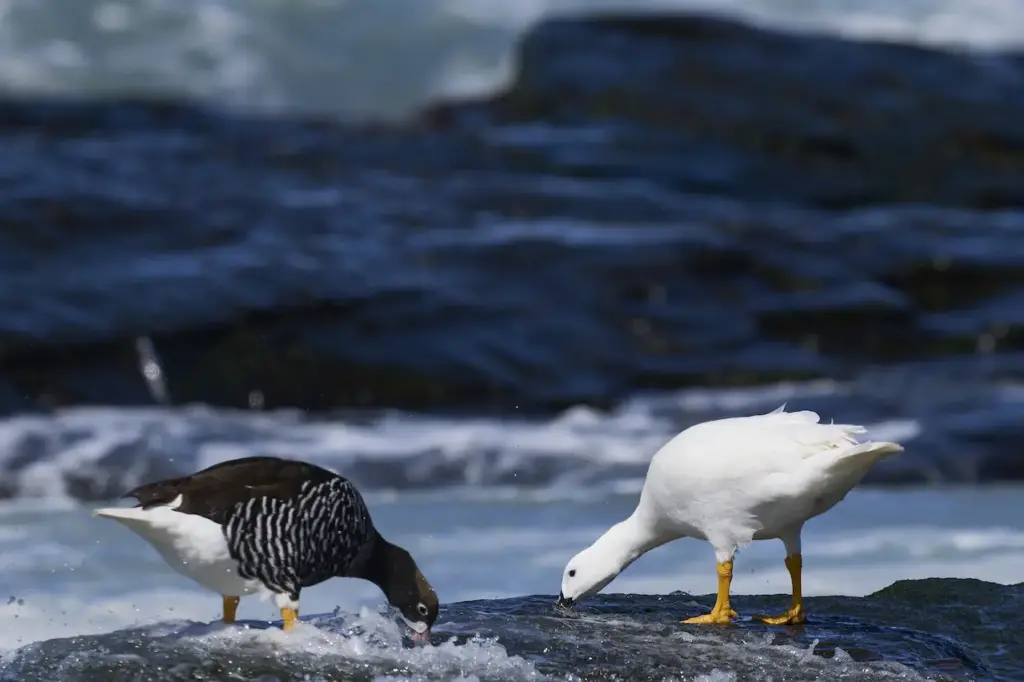
Ducks and geese generally feed on larvae and pupae usually found under rocks, aquatic animals, plant material, seeds, small fish, snails and crabs.
Feeding Ducks and Geese …
We all enjoy waterfowl and many of us offer them food to encourage them to come over and stay around – and it works! Who doesn’t like an easy meal!
However, the foods that we traditionally feed them at local ponds are utterly unsuitable for them and are likely to cause health problems own the road. Also, there may be local laws against feeding this species of bird – so it’s best to check on that rather than facing consequences at a later stage.
- Foods that can be fed to Ducks, Geese and Swans to survive cold winters and remain healthy when food is scarce in their environment.
Kelp Geese Walking On The Water
Please note that feeding ducks and geese makes them dependent on humans for food, which can result in starvation and possibly death when those feedings stop. If you decide to feed them, please limit the quantity to make sure that they maintain their natural ability to forage for food themselves – providing, of course, that natural food sources are available.
Goose Information / Overview … Photos of the Different Goose Species for Identification … Species Index of Geese


